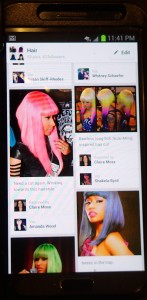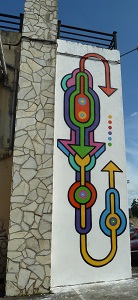When I was a little girl, my mother took me to New Orleans. I was enchanted with the city and my experience there, not the least of which was experimenting with Cajun dancing and learning to play the washboard. As the New Radicals say, when “you’ve got the music in you / don’t let go,” so I suppose it was only natural that I decided to try becoming a percussionist in high school. Although I had the muscle memory for patterns involving 4 mallets and a foot pedal that garnered me vibraphone solos, I never learned to read music or march on the football field properly. In the Christmas show, our sleigh ride had a lame horse because I got out of sync and didn’t know how to recover, being an inexperienced musician.
Undeterred, I was always excited by the idea of playing the “toys” or strange percussion instruments that lurked in the back of the band classroom gathering dust. Sure, I’d tried playing a güiro, bar chimes, and maracas in elementary school music class, but the vibraslap, cabasa, and flexatone were new to me. Regrettably, most high school football game pep songs don’t call for that sort of thing, though indoor drumline competition allowed us a brief glimpse of the promised land in the form of tubular bells.
In recent years, my musical performances have been primarily vocal, though Michael Bolton can vouch for the my lack of skill with the bodhrán. (For the record, he rocks out on the mandolin.) And while I’ll never feel the rhythm of testing quite like Pete Walen, I keep my options open to try new instruments and approaches.
Telling compelling stories
One of the dozen books I’m currently reading is Edward de Bono’s Lateral Thinking. He mentions many useful ways to train yourself to become creative. I was thinking about these methods when considering the relationship between a user story’s acceptance criteria and the implementation that satisfies that need. In my daydreams, I am considering who to recruit for my next musical endeavor.
For every one with dollar signs in his eyes
There must be hundreds that look at you as if you’re some kind of
Rhythm section want ad
No others need apply to the rhythm section want ad
And here’s the reason why
– Rhythm Section Want Ad, They Might Be Giants
I immediately start down the list of musicians I know and don’t have a handy drummer to call. Then, I realize wanting to recruit a drummer is really just an attempt to satisfy my need for rhythm – and as I’ve seen with so many other performers there are so many more ways to accomplish that goal. If I’d phrased my requirement thus “As a person wanting to create a musical act, I want a drummer so that my song has rhythm,” I would have missed out on so many useful possibilities that occur to me when I challenge the assumptions in my own formulation of the problem and reject the dominant idea of a drum kit in favor of the crucial factor of rhythm.
By delaying my judgment, I open up the opportunity to brainstorm and generate alternatives to the cliché 90s rock band pattern that jumps out at me. So the key to my dilemma seems to be figuring out the right acceptance criteria (or user goals) that will tell me when I’m satisfied and then chatting up several of my musician friends who can propose diverse solutions to my problem (e.g. a sampler could give me all of the above).
I might even take some cues from established bands I’ve had the remarkable experience of seeing live and in concert who made alternative choices for their rhythm section, feeding the wannabe percussion geek in me. OK Go performed a gorgeous rendition of their song “What To Do” using handbells during a show here in Atlanta. During a visit to a friend, I saw Tilly and the Wall, a band that routinely performs with a tap dancer on a box providing some fascinating beats for their music.
While I might pull out a slide whistle to jam with my kids or spin a ratchet on New Year’s Eve, I’ll never be a hippie with a djembe. (Who knows? Perhaps I can find someone to teach me how to play a few beats at the DragonCon drum circle or the Georgia Renaissance Festival.) At least I know there are many more possible solutions for my future projects. And though I’m still holding out hope for that next ridiculous musical number, you won’t see me on Song Fight! any time soon… that is, unless a Zydeco Tie shows up magically on my doorstep.






 There comes a time in every woman’s life when her friends announce their engagements. The joy she feels about the momentous occasion of the wedding carries her through the mundane details of choosing what to wear and shopping for a gift to wish the newlyweds well. With wedding showers appearing on the horizon, I knew it was time to go back into the fray of shopping at the mall.
There comes a time in every woman’s life when her friends announce their engagements. The joy she feels about the momentous occasion of the wedding carries her through the mundane details of choosing what to wear and shopping for a gift to wish the newlyweds well. With wedding showers appearing on the horizon, I knew it was time to go back into the fray of shopping at the mall.
